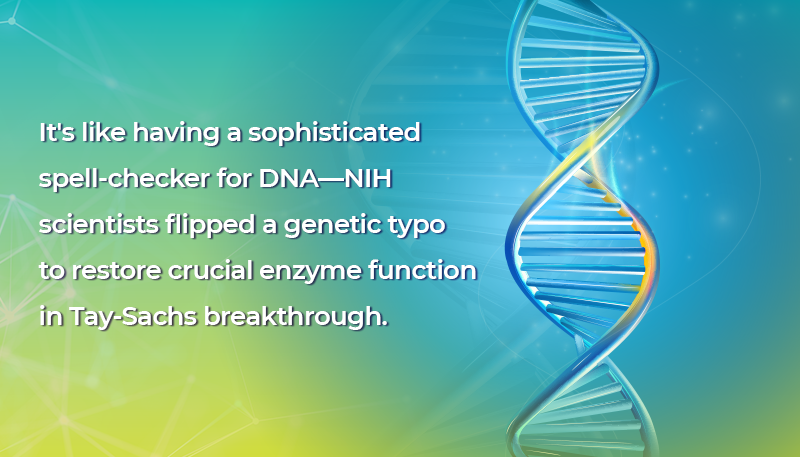2

Gene editing continues pushing boundaries—from treating devastating diseases to inspiring creative solutions when traditional genetic modification hits limitations. Two recent breakthroughs showcase this remarkable versatility.
Correcting DNA Typos for Tay-Sachs
NIH scientists made a promising Tay-Sachs breakthrough using gene editing in mice. When a single DNA letter is wrong—an "A" where there should be a "G"—cells can't make a crucial enzyme that breaks down nervous system fats. Using a precise base editor, researchers flipped that genetic typo back, restoring enzyme function and reducing toxic buildup. It's like having a sophisticated spell-checker for DNA. Combined with other promising approaches being tested, families affected by this rare disease now have multiple potential treatments in development. Read more
Beyond DNA: Glowing Plants Innovation
Chinese gene editing scientists faced a limitation creating luminescent plants because traditional genetic modification only produces green glows. Building on their expertise, they developed nanoparticle injections that bypass genetic barriers entirely, enabling red, blue, and green luminescence after sunlight "charging." The glow lasts 25 days and recharges repeatedly, though it's not bright enough for street lighting yet but shows promising potential. Read more
The Future of Genetic Innovation
From correcting life-threatening genetic errors to breakthrough solutions when DNA modification faces constraints, gene editing expertise drives innovation far beyond direct genetic changes—opening possibilities we're only beginning to imagine.
Gene editing continues pushing boundaries—from treating devastating diseases to inspiring creative solutions when traditional genetic modification hits limitations. Two recent breakthroughs showcase this remarkable versatility.
Correcting DNA Typos for Tay-Sachs
NIH scientists made a promising Tay-Sachs breakthrough using gene editing in mice. When a single DNA letter is wrong—an "A" where there should be a "G"—cells can't make a crucial enzyme that breaks down nervous system fats. Using a precise base editor, researchers flipped that genetic typo back, restoring enzyme function and reducing toxic buildup. It's like having a sophisticated spell-checker for DNA. Combined with other promising approaches being tested, families affected by this rare disease now have multiple potential treatments in development. Read more
Beyond DNA: Glowing Plants Innovation
Chinese gene editing scientists faced a limitation creating luminescent plants because traditional genetic modification only produces green glows. Building on their expertise, they developed nanoparticle injections that bypass genetic barriers entirely, enabling red, blue, and green luminescence after sunlight "charging." The glow lasts 25 days and recharges repeatedly, though it's not bright enough for street lighting yet but shows promising potential. Read more
The Future of Genetic Innovation
From correcting life-threatening genetic errors to breakthrough solutions when DNA modification faces constraints, gene editing expertise drives innovation far beyond direct genetic changes—opening possibilities we're only beginning to imagine.